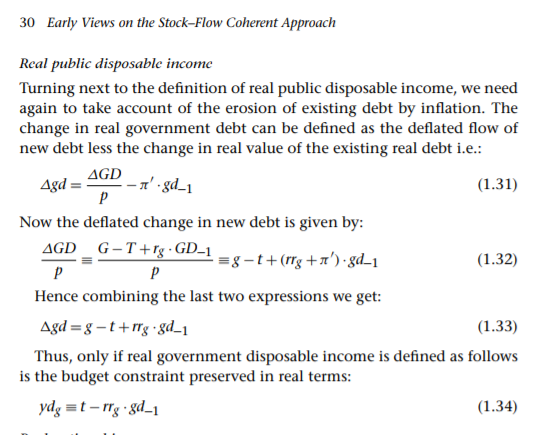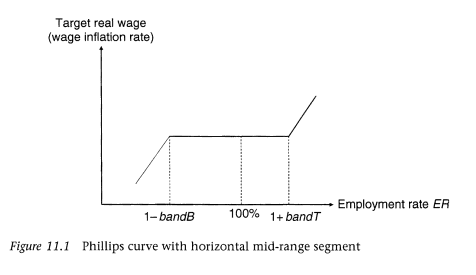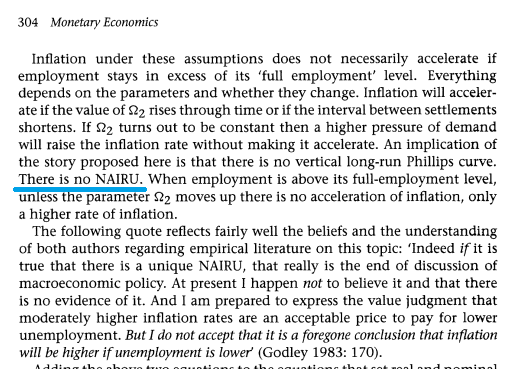The French edition of Keynes’ The General Theory, has a nice preface explaining what his book is all about. It is dated 20 February 1939.
This is available in The Collected Writings Of John Maynard Keynes, Volume VII – The General Theory Of Employment, Interest And Money. The Collected Writings has volumes I-XXX.
First, Keynes announces how he is breaking from orthodoxy:
For a hundred years or longer English Political Economy has been dominated by an orthodoxy. That is not to say that an unchanging doctrine has prevailed. On the contrary. There has been a progressive evolution of the doctrine. But its presuppositions, its atmosphere, its method have remained surprisingly the same, and a remarkable continuity has been observable through all the changes. In that orthodoxy, in that continuous transition, I was brought up. I learnt it, I taught it, I wrote it. To those looking from outside I probably still belong to it. Subsequent historians of doctrine will regard this book as in essentially the same tradition. But I myself in writing it, and in other recent work which has led up to it, have felt myself to be breaking away from this orthodoxy, to be in strong reaction against it, to be escaping from something, to be gaining an emancipation.
Then Keynes says what he is doing:
I have called my theory a general theory. I mean by this that I am chiefly concerned with the behaviour of the economic system as a whole,—with aggregate incomes, aggregate profits, aggregate output, aggregate employment, aggregate investment, aggregate saving rather than with the incomes, profits, output, employment, investment and saving of particular industries, firms or individuals. And I argue that important mistakes have been made through extending to the system as a whole conclusions which have been correctly arrived at in respect of a part of it taken in isolation.
Keynes, I imagine thought that the root of all orthodoxy is the saving-investment identity. Once this is understood, things follow more easily. He says:
Let me give examples of what I mean. My contention that for the system as a whole the amount of income which is saved, in the sense that it is not spent on current consumption, is and must necessarily be exactly equal to the amount of net new investment has been considered a paradox and has been the occasion of widespread controversy. The explanation of this is undoubtedly to be found in the fact that this relationship of equality between saving and investment, which necessarily holds good for the system as a whole, does not hold good at all for a particular individual. There is no reason whatever why the new investment for which I am responsible should bear any relation whatever to the amount of my own savings. Quite legitimately we regard an individual’s income as independent of what he himself consumes and invests. But this, I have to point out, should not have led us to overlook the fact that the demand arising out of the consumption and investment of one individual is the source of the incomes of other individuals, so that incomes in general are not independent, quite the contrary, of the disposition of individuals to spend and invest; and since in turn the readiness of individuals to spend and invest depends on their incomes, a relationship is set up between aggregate savings and aggregate investment which can be very easily shown, beyond any possibility of reasonable dispute, to be one of exact and necessary equality.
He then says how output is determined not by the capacity to produce but dynamic demand-led processes:
Rightly regarded this is a banale conclusion. But it sets in motion a train of thought from which more substantial matters follow. It is shown that, generally speaking, the actual level of output and employment depends, not on the capacity to produce or on the pre-existing level of incomes, but on the current decisions to produce which depend in turn on current decisions to invest and on present expectations of current and prospective consumption. Moreover, as soon as we know the propensity to consume and to save (as I call it), that is to say the result for the community as a whole of the individual psychological inclinations as to how to dispose of given incomes, we can calculate what level of incomes, and therefore what level of output and employment, is in profit-equilibrium with a given level of new investment; out of which develops the doctrine of the Multiplier.
and introducing the paradox of thrift:
Or again, it becomes evident that an increased propensity to save will ceteris paribus contract incomes and output; whilst an increased inducement to invest will expand them. We are thus able to analyse the factors which determine the income and output of the system as a whole;—we have, in the most exact sense, a theory of employment. Conclusions emerge from this reasoning which are particularly relevant to the problems of public finance and public policy generally and of the trade cycle.
Keynes then argues against the typical claim that the rate of interest adjusts to bring saving equal to investment:
Another feature, specially characteristic of this book, is the theory of the rate of interest. In recent times it has been held by many economists that the rate of current saving determined the supply of free capital, that the rate of current investment governed the demand for it, and that the rate of interest was, so to speak, the equilibrating price-factor determined by the point of intersection of the supply curve of savings and the demand curve of investment. But if aggregate saving is necessarily and in all circumstances exactly equal to aggregate investment, it is evident that this explanation collapses. We have to search elsewhere for the solution. I find it in the idea that it is the function of the rate of interest to preserve equilibrium, not between the demand and the supply of new capital goods, but between the demand and the supply of money, that is to say between the demand for liquidity and the means of satisfying this demand.
Keynes then announces his break away from Monetarism:
I have called this book the General Theory of Employment, Interest and Money; and the third feature to which I may call attention is the treatment of money and prices. The following analysis registers my final escape from the confusions of the Quantity Theory, which once entangled me. I regard the price level as a whole as being determined in precisely the same way as individual prices; that is to say, under the influence of supply and demand. Technical conditions, the level of wages, the extent of unused capacity of plant and labour, and the state of markets and competition determine the supply conditions of individual products and of products as a whole. The decisions of entrepreneurs, which provide the incomes of individual producers and the decisions of those individuals as to the disposition of such incomes determine the conditions. And prices—both individual prices and the price-level— emerge as the resultant of these two factors. Money, and the quantity of money, are not direct influences at this stage of the proceedings. They have done their work at an earlier stage of the analysis. The quantity of money determines the supply of liquid resources, and hence the rate of interest, and in conjunction with other factors (particularly that of confidence) the inducement to invest, which in turn fixes the equilibrium level of incomes, output and employment and (at each stage in conjunction with other factors) the price-level as a whole through the influences of supply and demand thus established.
And finally attacks the docrine of Say’s Law:
I believe that economics everywhere up to recent times has been dominated, much more than has been understood, by the doctrines associated with the name of J.-B. Say. It is true that his ‘law of markets’ has been long abandoned by most economists; but they have not extricated themselves from his basic assumptions and particularly from his fallacy that demand is created by supply. Say was implicitly assuming that the economic system was always operating up to its full capacity, so that a new activity was always in substitution for, and never in addition to, some other activity. Nearly all subsequent economic theory has depended on, in the sense that it has required, this same assumption. Yet a theory so based is clearly incompetent to tackle the problems of unemployment and of the trade cycle. Perhaps I can best express to French readers what I claim for this book by saying that in the theory of production it is a final break-away from the doctrines of J.-B. Say and that in the theory of interest it is a return to the doctrines of Montesquieu.
If you have read Monetary Economics by Wynne Godley and Marc Lavoie, you will notice that their approach is quite close to this spirit. In their approach, the components of demand which are exogenous are government expenditure and exports. Etc.


